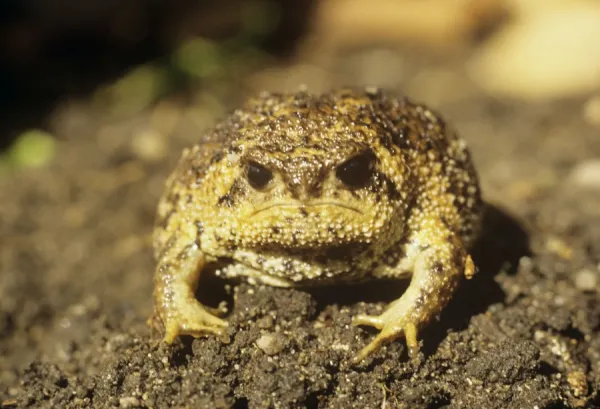Discover Rare Rain Frog for Sale: Boost Your Amphibian Collection Today!
Discover Rare Rain Frog for Sale: Boost Your Amphibian Collection Today!
Blog Article
The Very Best Reptile Enclosures: How to Develop the Ideal Habitat
Developing the best habitat for reptiles is not simply concerning putting them in a storage tank or enclosure; it entails a thoughtful factor to consider of various aspects that contribute to their total well-being. From the dimension of the unit to the sort of substratum made use of, every component plays a vital function in offering an atmosphere where your reptile can grow. By recognizing the details demands of your reptile varieties and carrying out the ideal habitat configuration, you can ensure their health and wellness and joy in captivity.
Selecting the Right Enclosure Dimension
When choosing a room dimension for reptiles, it is essential to consider their all-natural habits and room demands to ensure their health and wellness. Various reptile varieties have differing needs when it concerns environment area. Arboreal types like chameleons or tree snakes require vertical room for climbing and setting down, while earthbound varieties such as bearded dragons or leopard geckos need more floor room for exploring and thermoregulation. Marine turtles like red-eared sliders demand enclosures with both water and land areas for swimming and basking.
A basic rule of thumb is to provide ample area for the reptile to display all-natural behaviors, such as basking, hiding, climbing, and foraging. rain frog for sale. Inadequate area can lead to tension, behavior problems, and also physical health issue. Rooms ought to likewise enable the positioning of correct heating and illumination components, as well as environmental enrichment things like hides, branches, and rocks. By carefully considering the certain demands of the reptile varieties concerned, proprietors can develop an ideal and enhancing habitat that promotes total well-being and motivates all-natural habits.
Establishing Correct Burner
To make certain the health and health of reptiles in their enclosures, it is important to carefully set up appropriate home heating aspects. When establishing up heating components in a reptile room, it is essential to consider the specific temperature level demands of the types you are caring for.
One effective and usual home heating component for reptile rooms is a heat light or ceramic heat emitter. These warm resources can be made use of to produce a temperature slope within the unit, allowing reptiles to move in between warmer and cooler areas as required. Furthermore, under-tank heating pads or warm mats can be made use of to supply belly warmth, which is especially helpful for reptiles that require extra heat to aid in digestion.
Keeping track of the temperature level within the enclosure utilizing a thermometer is essential to guarantee that the home heating elements are maintaining the ideal temperature range for your reptile. Routinely examine and readjust the heating aspects as required to develop a healthy and balanced and comfy setting for your flaky good friend.
Selecting Appropriate Lights Components

Supplying the Suitable Substrate
Selecting the ideal substratum is necessary for producing a comfy and appropriate environment for reptiles in their enclosures. Some reptiles, such as desert-dwelling species like bearded dragons, grow on substrates like calcium sand or reptile carpet, while others, like round pythons, choose coconut husk or aspen bed linen to keep moisture levels.
Stay clear of substratums that can trigger impaction, such as loosened substrates like sand or crushed rock, particularly for reptiles understood to consume their bed linen. Routinely cleaning and replacing the substrate is vital to ensure a clean and hygienic environment for your reptile.
Designing for Enrichment and Convenience
Thinking about the substrate's role in providing a structure for natural actions and keeping a suitable environment, enhancing the reptile enclosure with correct decors is crucial for both enrichment and comfort. Decors such as branches, rocks, hideouts, and synthetic plants not only produce a more aesthetically attractive habitat but also offer practical objectives. Branches give climbing up opportunities for arboreal varieties, while rocks can act as basking places for heat. Hideouts offer shelter and security, decreasing tension levels for the reptile. Man-made plants not just improve the appearances however also supply hiding areas and enrichment by allowing the reptile to discover and connect with its atmosphere. When decorating the unit, it is necessary to take into consideration the reptile's species-specific requirements and actions to create a room that promotes physical click resources and mental health. By incorporating a selection of designs that simulate the reptile's all-natural environment, owners can ensure their animal's convenience and promote their natural reactions, ultimately leading to a better and healthier reptile.
Final Thought

Producing the More about the author best habitat for reptiles is not simply concerning positioning them in a storage tank or room; it entails a thoughtful factor to consider of various factors that add to their overall health.Selecting the proper substratum is necessary for developing a comfortable and ideal setting for reptiles in their units. Some reptiles, such as desert-dwelling varieties like bearded dragons, prosper on substratums like calcium sand or reptile carpeting, while others, like round pythons, favor coconut husk or aspen bedding to keep moisture degrees.
By integrating a range of decors that mimic the reptile's all-natural environment, proprietors can ensure their family pet's comfort and stimulate their natural impulses, ultimately leading to a better and healthier reptile.
In conclusion, creating the perfect environment for reptiles includes choosing the go to these guys ideal enclosure size, heating aspects, lighting fixtures, substrate, and designs.
Report this page